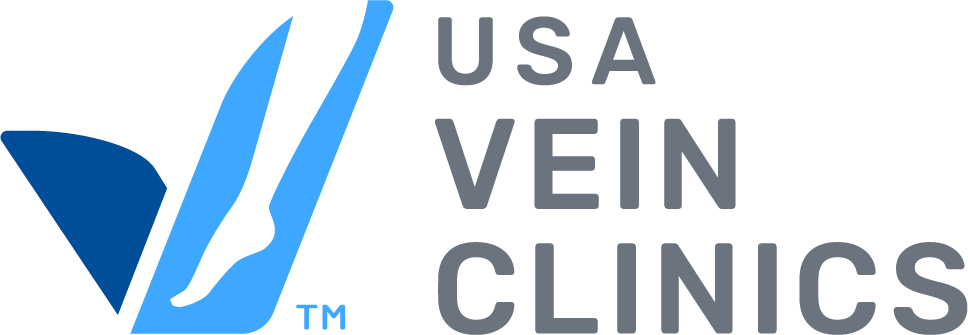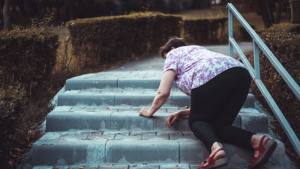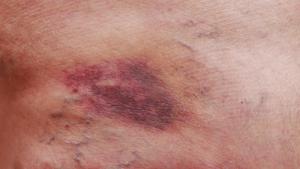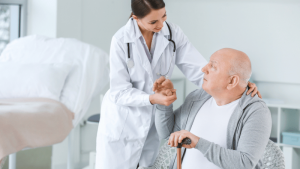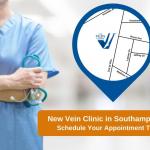
As concerning as it may sound, a varicose vein rupture is a rare occurrence that can happen after an injury. According to the Journal of Vascular Surgery, three to nine percent of patients with varicose veins will experience mild bleeding from a burst varicose vein. Ruptured varicose veins may be harmless, but treating the varicose vein can help prevent the event from happening again. Understanding the causes and symptoms of burst varicose veins will help you know what to do if it happens. If you notice signs such as bruising near or on your varicose veins, have a medical professional examine it. They can identify what may have caused it and provide an appropriate treatment.
SCHEDULE A VEIN SCREENING TODAY
What Happens When a Varicose Vein Bursts?
When a varicose vein “blows out,” the weakened vein ruptures, bleeding either under the skin or externally. Although it can be alarming, this situation is generally not life-threatening but does require immediate attention.
What Causes a Burst Varicose Vein?
A burst varicose vein is typically caused by increased pressure in the veins or weakened vein walls. Certain conditions or events can cause a ruptured vein, such as injury or poor circulation.
Vein Disease
Vein disease, also known as chronic venous insufficiency (CVI), can cause the vein valves to weaken, allowing blood to pool in the veins instead of flowing back to the heart efficiently. Over time, the vein stretches, leading to the appearance of varicose veins and spider veins, which can be vulnerable to rupturing.
Inadequate Blood Flow
When blood flow in the veins is restricted or inefficient, pressure builds up, causing veins to swell and stretch. Over time, increased pressure weakens vein walls, making them more vulnerable to rupture. Prolonged sitting or standing, pregnancy, or obesity can cause worsening symptoms.
Trauma or Injury to the Leg
Any impact or injury to varicose veins in the lower extremities, such as a fall or bumping your leg, can lead to rupture. Even minor trauma can cause a fragile vein to rupture if it is already overstretched or weakened. It will most likely show on the skin as a bruise.
Skin Ulcers & Infections
Venous ulcers are open, slow- or non-healing sores on the leg caused by vein disease. Because they are open sores, the risk of infection increases, especially if the wound isn’t properly tended to. The chances of bleeding from a venous ulcer are rare; however, some research suggests that it’s possible for a varicose vein near or within the ulcer to rupture as the ulcer grows.
Individuals who are overweight or struggling with chronic venous insufficiency are most at risk of experiencing increased pressure in the veins or weakened vein walls. However, these complications can also be caused by aging, genetics, or strenuous workouts. Early detection and treatment can help you identify possible risks and take steps to prevent complications.
Learn About Risk Factors for Varicose Veins
Signs & Symptoms of a Ruptured Varicose Vein
Varicose vein bursting can result in internal or external bleeding. When internal bleeding happens, the blood can settle underneath the surface of the skin and resemble a hematoma. Hematomas may be difficult to see on darker skin. Common symptoms may include:
- Numbness
- Weakness
- Dizziness
- Fainting
External bleeding can have similar symptoms but results from a cut or scrape on a varicose vein. The bleeding can be significant since blood was already pooling in the legs before the injury. It’s important to seek immediate medical attention when significant bleeding happens because it can lead to infections or life-threatening blood clots. Additionally, treating varicose veins sooner can help patients avoid their veins rupturing.
What to Do If a Varicose Vein Bursts
If a varicose vein bursts and bleeds externally, patients should seek immediate care. They can take the following steps until they get help from a medical professional:
- Apply Direct Pressure: Use a clean cloth or sterile gauze to apply firm pressure on the affected area to control bleeding.
- Hold Pressure for at Least 10 Minutes: Keep firm pressure on the area for at least 5-10 minutes or until bleeding slows. Removing pressure too early can restart the bleeding.
- Elevate Your Leg: Raise your leg above heart level to help reduce blood flow and minimize bleeding.
- Get Medical Attention: A ruptured vein requires a medical evaluation, even if the bleeding stops.
A burst varicose vein that bleeds internally may not be as serious as it would be externally, but a medical professional should still look at it. USA Vein Clinics offers various treatments for varicose veins that can help identify what caused the varicose vein to burst, manage symptoms, improve circulation, and reduce the likelihood of future ruptures.
Treatment Options to Avoid Burst Veins
It’s recommended that varicose veins be treated as soon as possible to avoid complications and prevent them from rupturing. USA Vein Clinics specializes in non-surgical, outpatient vein treatments that can help alleviate painful symptoms with minimal risks. After a vein screening, a specialist may recommend one of the following treatments:
- Endovenous Laser Treatment (EVLT): A laser-based treatment that closes off damaged veins, improving circulation to minimize pain associated with severe varicose veins.
- ClariVein®: A non-thermal treatment that uses a rotating catheter to deliver medication directly into the vein and seal it off.
- Varithena: A foam injection treatment used on twisted or hard-to-treat varicose veins to help reroute blood flow to healthier veins.
- Ultrasound-Guided Sclerotherapy (UGSC): Ultrasound-guided Sclerotherapy (UGSC) uses ultrasound on superficial or spider veins to seal the vein with a solution injection.
- Radiofrequency Ablation (RFA): Heat energy is used to seal off damaged veins; it’s best for larger varicose veins that need stronger closure techniques.
- VenaSeal™: A medical-grade adhesive that seals diseased veins shut, allowing blood to flow through healthier veins.
- Visual sclerotherapy: A simple injection designed to close weak veins, improving appearance and blood circulation.
View Our Patients’ Testimonials
Take Control of Your Vein Health at USA Vein Clinics
Get the vein care and symptom relief you need with a tailored treatment plan at USA Vein Clinics. Our nationwide network of vein treatment centers offers access to expert vein specialists ready to help you. We accept most insurance plans, including Medicare and Medicaid.
Schedule an appointment online or call 888.768.3467 to connect with a Care Team member.
